Indian Polity and Governance: September 2025 UPSC Current Affairs | Current Affairs & Hindu Analysis: Daily, Weekly & Monthly PDF Download
Relief for Refugees: The Immigration and Foreigners (Exemption) Order, 2025
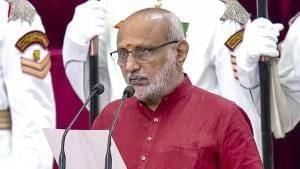
Why in News?
The recent notification by the Union Ministry of Home Affairs regarding the Immigration and Foreigners (Exemption) Order, 2025, has brought attention to India's evolving refugee policy, particularly concerning Sri Lankan Tamil refugees. This order exempts certain groups from passport and visa requirements, providing crucial protection from forcible repatriation for those who have resided in Tamil Nadu since the 1990s. However, it raises important questions about their legal status, citizenship rights, and long-term rehabilitation.
Key Takeaways
- The 2025 Order marks a significant shift in India's approach to refugee policy.
- Sri Lankan Tamil refugees have been granted temporary relief but remain without a clear path to citizenship.
- Historically, these refugees have faced exclusion from benefits available to other groups under the Citizenship Amendment Act (CAA).
Additional Details
- Exemption Granted: This order allows nationals from Nepal and Bhutan, Tibetan refugees, six religious minorities from Afghanistan, Bangladesh, Pakistan, and Sri Lankan Tamils to bypass strict passport and visa regulations.
- Historical Reference: To qualify, refugees must have entered India before January 9, 2015, and registered themselves.
- Protection from Forcible Return: The order specifically protects Sri Lankan Tamils from involuntary repatriation after living in India for decades, addressing a major humanitarian concern.
- Civil War Displacement: Many of these refugees fled to Tamil Nadu during the Sri Lankan civil war in the 1990s and have since relied on government support.
- Legal Hurdles: Despite the exemption, refugees continue to be classified as "illegal migrants," hindering their ability to pursue citizenship and access vital services.
- Policy Options Ahead: Potential solutions include liberalizing long-term visas, facilitating voluntary repatriation, and exploring local integration for those unwilling to return.
- The Immigration Order of 2025 represents a progressive step, yet it leaves significant questions regarding the future of Sri Lankan Tamil refugees in India. Addressing issues of citizenship, dignity, and long-term solutions remains essential for fostering stability and compassion in India's refugee policy.
Criminal Defamation is Incompatible with Democratic Debate
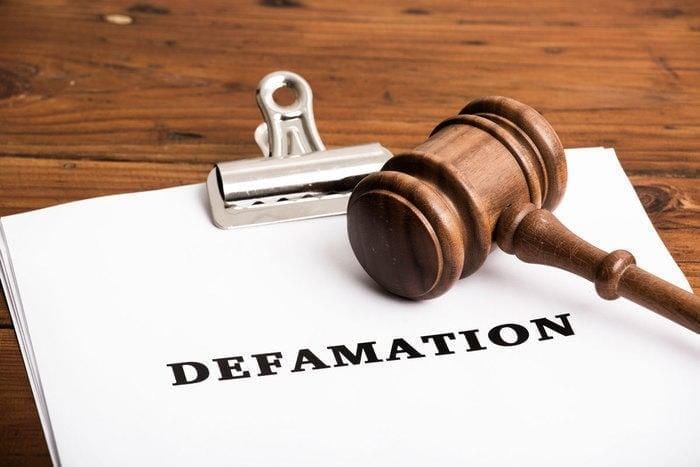
Why in News?
The topic of criminal defamation has re-emerged in public discourse following recent statements from the Supreme Court regarding its misuse in India. Initially intended as a protective measure for individual reputation, criminal defamation has morphed into a mechanism for intimidation and political retribution, thereby threatening the essence of democratic dialogue.
Key Takeaways
- The Supreme Court's 2016 ruling on criminal defamation has led to increased misuse of the law.
- Many political figures and journalists are facing disproportionate litigation under criminal defamation, which hampers free speech.
- There is a growing call for reform to transition from criminal to civil remedies for defamation cases.
Additional Details
- Statutory Definition: According to Section 499 of the Indian Penal Code, defamation involves making a harmful statement about a person with the intent or knowledge that it will damage their reputation.
- Punishment: The penalty for criminal defamation under Section 500 can include simple imprisonment for up to two years, a fine, or both.
- Misuse Cases: High-profile instances include politicians using defamation claims to stifle dissent, resulting in lengthy legal battles that detract from governance.
Conclusion
The current framework of criminal defamation in India has shifted from its original purpose of safeguarding individual dignity to becoming a tool for silencing criticisms. The judicial recognition of this misuse suggests an urgent need for reform, favoring civil remedies that would uphold free speech while still protecting reputational rights. The time has come for India to align its legal practices with global democratic standards, ensuring that political debates remain open and constructive rather than litigious.
National Security Act of 1980
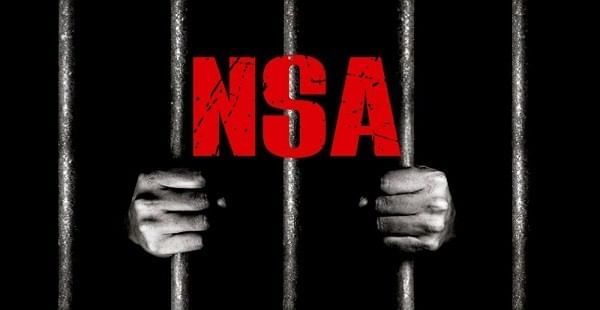
Why in News?
Climate activist Sonam Wangchuk has been detained under the National Security Act (NSA) in Leh, as he advocates for statehood and protections for Ladakh.
Key Takeaways
- The National Security Act was enacted on 23 September 1980 and is applicable across India, previously not in Jammu & Kashmir.
- It is rooted in Article 22(3)(b) and Article 22(4) of the Indian Constitution.
Additional Details
- Objective: The Act aims to safeguard defence, national security, public order, foreign relations, and essential supplies/services.
- Grounds for Detention: Includes actions prejudicial to India's defence, harming foreign relations, disturbing public order, endangering essential supplies, and regulating foreigners' presence.
- Authorities Empowered: The Centre, States, District Magistrates, and Police Commissioners (if authorized) can enforce the Act.
- Duration of Detention: Individuals can be detained for a maximum of 12 months; grounds for detention must be communicated within 5 days (extendable to 15 days).
- A detainee can be held for 10 days without disclosure of charges.
- Advisory Board: Consists of three persons qualified to be High Court judges and reviews orders within 3 weeks. If no sufficient cause is found, release is mandatory.
- Historical Context: Builds on colonial-era laws such as Bengal Regulation III (1818), Rowlatt Acts (1919), and the Preventive Detention Act (1950), reintroduced by Indira Gandhi in 1980.
The National Security Act allows for legal representation and judicial remedies, including filing writ petitions in the High Court or Supreme Court. However, detainees cannot access legal counsel before the Advisory Board, and grounds for detention may be withheld in the interest of public safety.
Sonam Wangchuk Held Under NSA: Key Facts About the Law
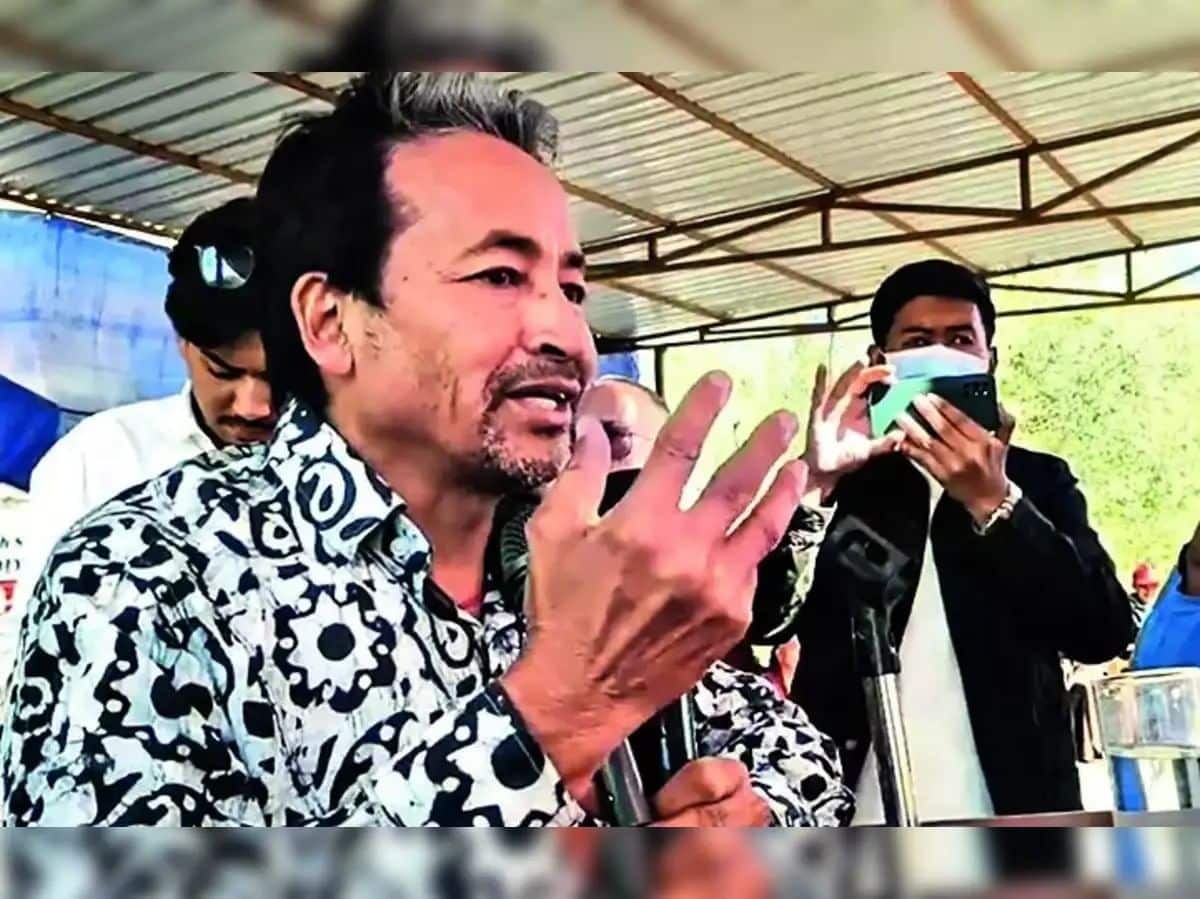
Why in News?
Climate activist Sonam Wangchuk, who is prominent in advocating for Ladakh’s statehood and the protections under the Sixth Schedule, has been detained under the National Security Act (NSA) and relocated to Jodhpur jail. The government has accused him of allegedly inciting violent protests in Leh, which resulted in the deaths of four individuals and injuries to 50 others during police actions.
Key Takeaways
- Sonam Wangchuk's detention has sparked discussions about the NSA and its implications.
- The NSA is among India's strictest preventive detention laws, historically used against various groups.
Additional Details
- Preventive Detention: This practice involves holding individuals not for a crime already committed but to avert potential threats to public order or national security. Its goal is to prevent possible harm before it occurs.
- Differences Between Preventive and Punitive Detention:
- Preventive Detention: Aims to stop future harmful actions and is anticipatory in nature.
- Punitive Detention: Applied as a punishment after a conviction for an already committed offense, following due legal process.
- Constitutional Provision: The Indian Constitution allows preventive detention under Article 22, which includes two parts. The first deals with ordinary law cases, while the second pertains to preventive detention laws, allowing for detention without trial.
- Individuals can be held for up to three months without advisory board approval, and beyond that, such approval is necessary. Grounds for detention must be communicated, although certain details may be withheld in the interest of public safety.
The NSA traces its roots back to colonial times and was formally instituted after Independence with the Preventive Detention Act of 1950. It has been amended and enacted in various forms, including the controversial Maintenance of Internal Security Act (MISA) of 1971, which was repealed post-Emergency. The NSA empowers authorities to detain individuals preemptively to prevent actions deemed prejudicial to India's defense, public order, or essential supplies.
What the NSA Provides?
- Under the NSA, detention orders act similarly to arrest warrants, permitting authorities to hold individuals in designated facilities and transfer them as necessary.
- Grounds for detention must be shared within 5 to 15 days, allowing detainees to submit representations to the government.
- An Advisory Board, composed of High Court judges, must review cases within three weeks and order release if there is no sufficient cause for detention. The maximum detention period can last up to 12 months, although earlier revocation is possible.
- However, the safeguards are limited, as detainees cannot have legal representation before the Advisory Board, and the government may withhold information citing public interest, concentrating significant power in official hands.
- Sonam Wangchuk can challenge his NSA detention by submitting a representation to the government or awaiting the Advisory Board’s review. He may also seek recourse from the High Court or Supreme Court under Articles 226 or 32. The government retains the authority to revoke the detention order at any time.
- Until legal processes are concluded, the NSA allows for detention without formal charges or evidence in open court, granting authorities considerable discretion.
Historical Context of NSA Usage
- The NSA has been invoked in notable cases, including the 2023 detention of radical Sikh preacher Amritpal Singh, and the previous detention of Bhim Army chief Chandrashekhar Azad in 2017.
- During the anti-CAA protests in 2020, numerous individuals in Uttar Pradesh faced detention under this Act.
- Notable figures, such as Dr Kafeel Khan, have had their NSA detentions overturned by the judiciary.
- States like Uttar Pradesh and Madhya Pradesh have applied the NSA in cases related to “Love Jihad,” communal violence, cow slaughter, and habitual crime, often stretching the definition of national security.
- Critics argue that the NSA is a blunt instrument prone to misuse, while proponents assert its necessity for maintaining national security.
- The law's application has frequently led to judicial intervention, as seen in instances where the Supreme Court has overturned unjustified detentions.
Enhanced Powers of Foreigners Tribunals
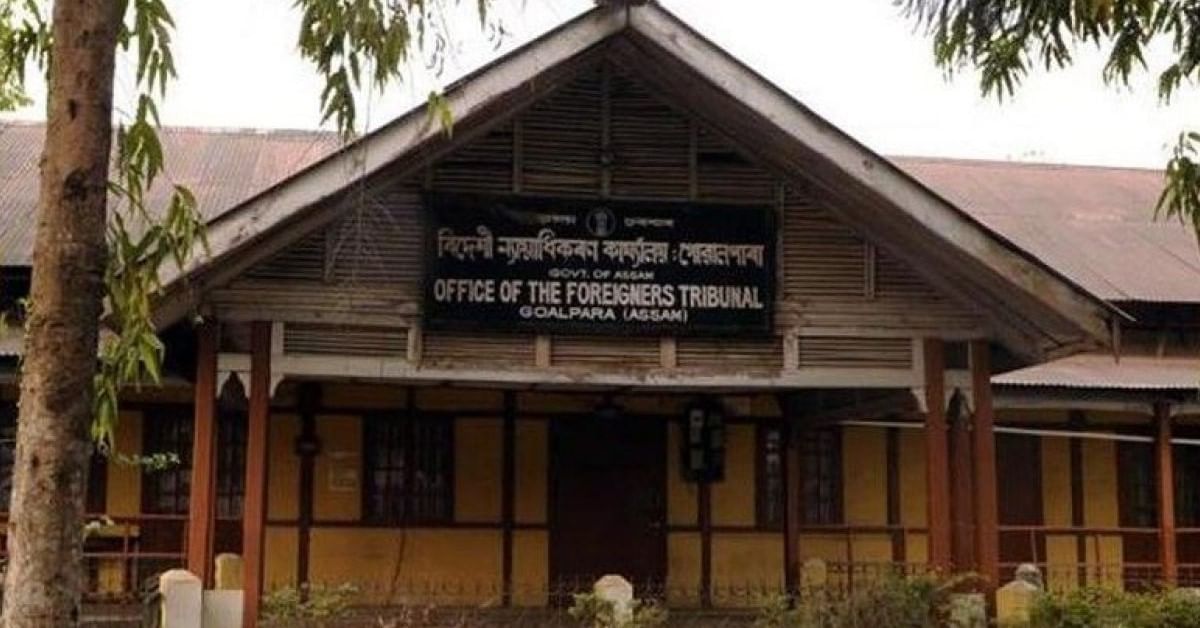
Why in News?
The Union Home Ministry has recently enacted the Rules, Order, and Exemption Order under the Immigration and Foreigners Act, 2025. This comprehensive legislation supersedes various older laws such as the Passport (Entry into India) Act, 1920, the Registration of Foreigners Act, 1939, the Foreigners Act, 1946, and the Immigration (Carriers’ Liability) Act, 2000, streamlining the governance of foreign individuals and immigration processes.
Key Takeaways
- The new Act aims to eliminate confusion caused by multiple pre-Independence laws related to immigration and travel.
- It formalizes the Bureau of Immigration's (BOI) authority to investigate immigration fraud and maintain a comprehensive immigration database.
- Foreigners Tribunals (FTs) are now granted judicial powers akin to first-class magistrates.
Additional Details
- Investigation Powers: The Bureau of Immigration is empowered to investigate immigration fraud and collaborate with state authorities to identify and deport foreigners.
- Biometric Recording: Biometric data collection is now mandated for all foreigners, expanding beyond previous limitations.
- Reporting Requirements: Educational institutions are required to report foreign students' attendance and conduct to the Foreigners Regional Registration Office (FRRO).
- Premises Closure: Establishments frequented by illegal migrants can be shut down, adding to existing measures against undesirable foreigners.
- Judicial Powers of FTs: Foreigners Tribunals can now issue arrest warrants and send individuals without citizenship proof to detention centers, with their decisions being reviewable within 30 days.
- Expanded Entry Refusal Grounds: Entry can be denied based on criteria such as anti-national activities, terrorism, and human trafficking.
- Exemptions: Certain groups, including registered Sri Lankan Tamil nationals and undocumented minorities from neighboring countries, are exempt from the passport and visa requirements under specific conditions.
This new framework is intended to modernize India's immigration policies, addressing contemporary challenges while ensuring better regulation and enforcement regarding foreign nationals in the country.
Promotion and Regulation of Online Gaming Act, 2025

Why in News?
The Promotion and Regulation of Online Gaming Act, 2025, recently passed by Parliament, aims to create a comprehensive legal framework for the online gaming sector in India. The Act encourages e-sports and online social games while imposing a ban on online money gaming services, advertisements, and financial transactions related to such activities.
- The Act was introduced in Parliament as a Finance Bill under Articles 117(1) and 117(3) of the Constitution, with the President's recommendation. It seeks to foster a responsible digital environment for citizens while regulating and promoting the online gaming industry.
- One of the key features of the Act is the complete prohibition of online money games, which includes offering, advertising, or facilitating financial transactions for real money games. Banks and financial institutions are barred from processing payments for such platforms, and authorities empowered under the IT Act, 2000, are given the power to block unlawful platforms.
Key Provisions of the Act
1. Classification of Online Games
Online games are classified into three categories:
- E-Sports: Recognized as a legitimate sport, e-sports involve competitive digital sports played through organized tournaments, requiring skill.
- Online Social Games: These are primarily skill-based games designed for entertainment or social interaction, such as Wordle.
- Online Money Games: These games involve financial stakes, whether based on chance, skill, or both. Players pay fees or deposit money with the expectation of monetary or other gains, such as Dream11, Poker, and Rummy.
2. Applicability of the Act
The Act applies across India and includes online money gaming services offered within the country or operated from outside but accessible in India.
3. Promotion of Positive Gaming
The Act also promotes positive gaming initiatives, such as:
- E-Sports: The Ministry of Youth Affairs and Sports is tasked with framing guidelines, establishing training academies, and research centers for e-sports.
- Social/Educational Games: The Union Government can recognize, register, and promote safe, age-appropriate platforms for learning and recreation.
4. Regulatory Body
The Act provides for the establishment of a national-level regulatory body to:
- Categorize and register games.
- Determine if a game qualifies as a money game.
- Handle complaints and grievances.
5. Offences and Penalties
The Act outlines severe penalties for various offences, including:
- Offering online money games, which can lead to up to 3 years of imprisonment and a fine of ₹1 crore.
- Advertising banned games, which can result in up to 2 years of imprisonment and a fine of ₹50 lakh.
Offences are classified as cognizable and non-bailable.
6. Liability Clause
The Act holds companies and their officers accountable for violations. Independent and non-executive directors are exempt from liability if they can demonstrate due diligence.
Online Gambling
Online games are defined as those played on electronic or digital devices and operated through software using the internet or other electronic communication technologies. It facilitates real-time interaction and competition between players, regardless of their location.
Classification:
- Skill-Based Games: They prioritize skill over chance and are legal in India. E.g., Game 24X7, Dream11, and Mobile Premier League (MPL).
- Games of Chance: Their outcome depends mainly on luck rather than skill and are Illegal in India. E.g., Roulette, which attracts players primarily for monetary rewards.
Market Size:
- In 2023, India became the world's largest gaming market with 568 million gamers and 9.5 billion app downloads.
- The market, valued at USD 2.2 billion in 2023, is projected to reach USD 8.6 billion by 2028.
What are the Key Growth Drivers of India’s Gaming Industry?
1. Economic Drivers
- India’s vibrant start-up ecosystem, supported by initiatives like Start-up India and Atmanirbhar Bharat, has spurred the growth of numerous gaming companies and platforms.
- These start-ups are driving innovation and catering to the diverse gaming preferences of Indian consumers, contributing to the industry’s expansion.
- Notable gaming unicorns include Games24X7, Dream11, and Mobile Premier League.
- In recent years, gaming companies have raised USD 2.8 billion from domestic and global investors, accounting for 3% of total startup funding in India.
- NVIDIA has announced the launch of its cloud gaming service in India in November 2025.
2. Technological Enablers
- Initiatives like BharatNet and the National Broadband Mission aim to provide high-speed internet to rural and remote areas, enhancing accessibility for gamers.
- The rollout of 5G has further improved internet speeds and reduced latency, crucial for a seamless gaming experience.
- A recent survey by MoSPI indicates that over 85% of Indian households own smartphones, with 86.3% having internet access within their premises.
- Mobile phones constitute 90% of the gaming market in India, compared to about 37% in the US and 62% in China.
3. Policy & Cultural Shifts
- The IT Rules 2021, self-regulatory bodies, and the AVGC Task Force have established a framework for the safe growth of the gaming industry.
- Gamers are honored in the Content Creators Award, and the Create in India Campaign promotes content creators.
- The Covid-19 lockdown accelerated industry growth by 50%, with average gaming time increasing from 2.5 to 4.1 hours per day, making gaming a legitimate career path.
How is the Gaming Industry Regulated in India?
1. Information Technology Act, 2000 & Rules
- The IT (Intermediary Guidelines and Digital Media Ethics Code) Rules, 2021, amended in April 2023, set standards for online gaming platforms.
- Intermediaries must prevent the circulation of unlawful/illegal content.
- Platforms offering money games must register with Self-Regulatory Bodies (SRBs), which determine if a game is permissible.
- Section 69A empowers the government to block illegal sites/apps — 1,524 betting and gambling platforms blocked (2022–June 2025).
2. Bharatiya Nyaya Sanhita, 2023
- Section 111: Penalises unlawful economic activities and cybercrimes.
- Section 112: Punishes unauthorised betting/gambling with 1–7 years imprisonment and fines.
3. Integrated Goods and Services Tax (IGST) Act, 2017
- Extends to illegal/offshore gaming platforms.
- Online money gaming suppliers must register under the Simplified Registration Scheme.
- The DG of GST Intelligence can direct blocking of unregistered/non-compliant platforms.
- Ensures digital gaming entities follow the same taxation norms as physical businesses.
4. Consumer Protection Act, 2019
- Prohibits misleading/surrogate advertisements.
- The CCPA can investigate, penalise, and initiate criminal proceedings.
- Advisories issued to restrict celebrities/influencers from endorsing betting platforms.
Cutting Off Online Gaming with the Scissors of Prohibition

Why in News?
The Government of India has recently enacted the Promotion and Regulation of Online Gaming Bill, 2025, which bans online real money games while promoting e-sports and social gaming. This decision was made without prior debate or consultation, raising significant concerns about its implications for investment and the digital economy.
Key Takeaways
- The new Bill has raised alarms regarding job losses and revenue declines in the online gaming sector.
- Critics argue that the ban may deter foreign investment and stifle innovation in India's digital industries.
- The government's justification of the ban is based on concerns about addiction and financial ruin among players.
Additional Details
- Impact on Employment: The online gaming industry was projected to employ around 1.5 lakh people by 2025 in fields such as design, programming, and customer support, but the ban threatens massive job losses.
- Revenue Implications: Online gaming was expected to contribute approximately ₹17,000 crore in GST revenue, a loss the government must now contend with.
- Concerns Over Regulation: Critics suggest that a better approach would involve careful regulation rather than outright prohibition, which might address issues like addiction without destroying the industry.
- Responsible Gaming Measures: Prior to the ban, many online gaming companies had implemented measures like age-gating and self-exclusion to promote responsible gaming, which the ban disregards.
- Constitutional Issues: The ban raises questions about constitutional rights, particularly Article 19(1)(g), which guarantees the right to practice any profession or business.
In conclusion, the abrupt ban on online real money gaming poses risks to jobs, revenue, and the regulatory landscape, leaving uncertainty about whether it effectively protects citizens or exacerbates existing vulnerabilities in the gaming sector.
Presidential Reference on Governor’s Assent to Bills
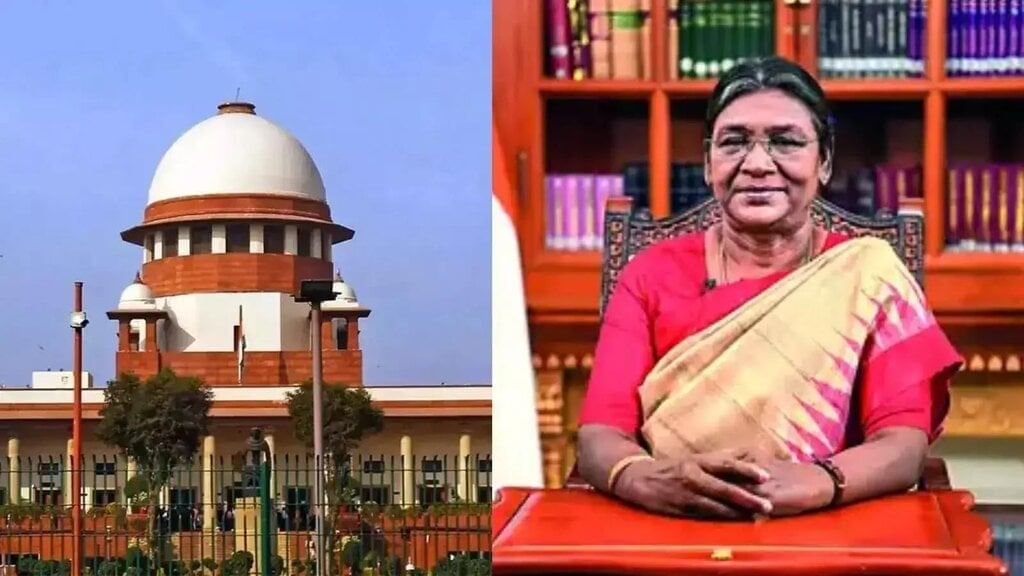
Why in News?
The Supreme Court has reserved its opinion on the Presidential reference under Article 143(1) of the Constitution, which concerns the powers of the President and Governors in granting assent to Bills. This reference follows the Supreme Court's ruling in April 2025, which deemed the Tamil Nadu Governor R. N. Ravi's delay in assenting to 10 Bills unconstitutional. The Court invoked Article 142 to enforce assent and established timelines for such actions. This situation raises significant questions regarding federalism, separation of powers, and judicial review within India's constitutional framework.
Key Takeaways
- The Presidential reference aims to clarify constitutional doubts about the Governor's powers.
- There are ongoing debates about the balance of power between the Governor and the elected government.
- The Supreme Court's ruling emphasizes the need for timely assent to Bills.
Additional Details
- Nature of the Reference: The Presidential reference under Article 143(1) allows the President to seek the Supreme Court's opinion on significant legal questions. The states argue that this reference acts as an indirect appeal against the Supreme Court's ruling, which violates the principle of stare decisis.
- Governor’s Powers: The states contend that the Governor must act based on the aid and advice of the Council of Ministers (Article 163), reflecting the popular mandate rather than personal discretion. Conversely, the Centre argues that discretionary powers exist for exceptional circumstances.
- Governor’s Veto and “Pocket Veto”: The Supreme Court ruled that a Governor cannot indefinitely withhold assent to a Bill, stating that such actions lead to the Bill lapsing. The concept of a “pocket veto” by the Governor is rejected, emphasizing the constitutional precedent from the Government of India Act 1935.
- Judicial Enforcement of Timelines: The Supreme Court's ruling introduced timelines for assent to prevent unnecessary delays, although the Centre argues this amounts to a judicial amendment of the Constitution.
- Fundamental Rights and Writ Jurisdiction: The Centre maintains that states cannot invoke Article 32, which is meant for individual fundamental rights, while states argue that denying them writ remedies weakens federal balance.
- Larger Constitutional and Political Implications: The ongoing reference tests the limits of judicial review over executive actions and impacts the dynamics of federalism in India.
In conclusion, the Presidential reference is pivotal in determining how India navigates the delicate balance between federalism, constitutional conventions, and judicial oversight. It is essential to clarify the Governor's role and consider reforms to strengthen the relationship between the Union and states to prevent future disputes.
Supreme Court Guidelines on DNA Evidence

Why in News?
In the case of Kattavellai @ Devakar v. State of Tamil Nadu, the Supreme Court mandated the establishment of stringent protocols for handling DNA evidence in criminal cases. The Court directed all State Directors General of Police (DGPs) to prepare Chain of Custody Register forms and related documentation, ensuring the integrity and reliability of DNA samples across all districts.
Key Takeaways
- The Supreme Court emphasized the need for uniform guidelines for DNA evidence handling.
- Strict protocols were laid down to prevent contamination and ensure reliability in DNA evidence.
Additional Details
- Need for Uniform DNA Handling Guidelines: The Court highlighted serious lapses in previous cases, such as delays in sending samples to forensic labs and failures in maintaining a clear chain of custody, which raised contamination concerns.
- Key Guidelines Issued:
- DNA samples must be collected with due care, properly packaged, and documented.
- Samples must be transported to the concerned police station or hospital and reach the Forensic Science Laboratory within 48 hours, with any delays explained and preservation measures documented.
- Once stored, samples cannot be opened or altered without trial court authorization.
- A Chain of Custody must be maintained from collection until conviction or acquittal, with accountability placed on the investigating officer for any lapses.
- The Supreme Court has consistently stressed that while DNA evidence is powerful, it must adhere to strict standards of collection and handling.
- In past rulings, such as Anil v. State of Maharashtra (2014) and Manoj v. State of Madhya Pradesh (2022), the Court upheld the validity of DNA profiling but noted risks of contamination and the importance of quality control.
In conclusion, the Supreme Court's guidelines aim to enhance the reliability of DNA evidence and strengthen the criminal justice system. Their effectiveness relies on consistent enforcement by police and forensic agencies.
Decisive Step: Including Aadhaar as the 12th Document for Voter Verification
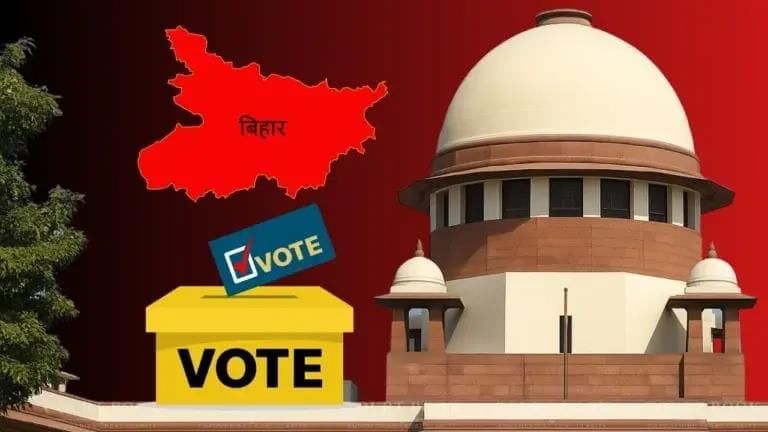
Why in News?
The right to vote is a fundamental element of citizenship in a democracy. However, procedural rigidity in updating electoral rolls has led to the exclusion of eligible voters. The Supreme Court's recent intervention in Bihar's Special Intensive Revision (SIR) exercise mandated the inclusion of Aadhaar as one of the 12 acceptable documents for voter verification, addressing the issue of over 65 lakh voters being removed from the draft rolls.
Key Takeaways
- The Supreme Court's decision ensures that electoral processes remain inclusive and do not exclude genuine voters.
- Aadhaar's inclusion as a verification document prevents mass disenfranchisement, especially among marginalized groups.
Additional Details
- Judicial Clarity: The Supreme Court rejected the Election Commission of India's (ECI) argument that Aadhaar serves only as proof of residency, noting that many accepted documents do not conclusively establish citizenship.
- Preventing Mass Exclusion: With 90% of Bihar's population holding Aadhaar, excluding it would disenfranchise many eligible voters, particularly the poor and marginalized.
- Correcting Anomalies: Statistical analyses revealed that women and migrants were disproportionately affected by the exclusion process.
The Supreme Court's ruling on Aadhaar verification for voters is a significant step towards ensuring electoral inclusivity. It reflects the need to balance accuracy in voter rolls with the imperative of making democratic participation accessible to all citizens.
Recusal of Judges
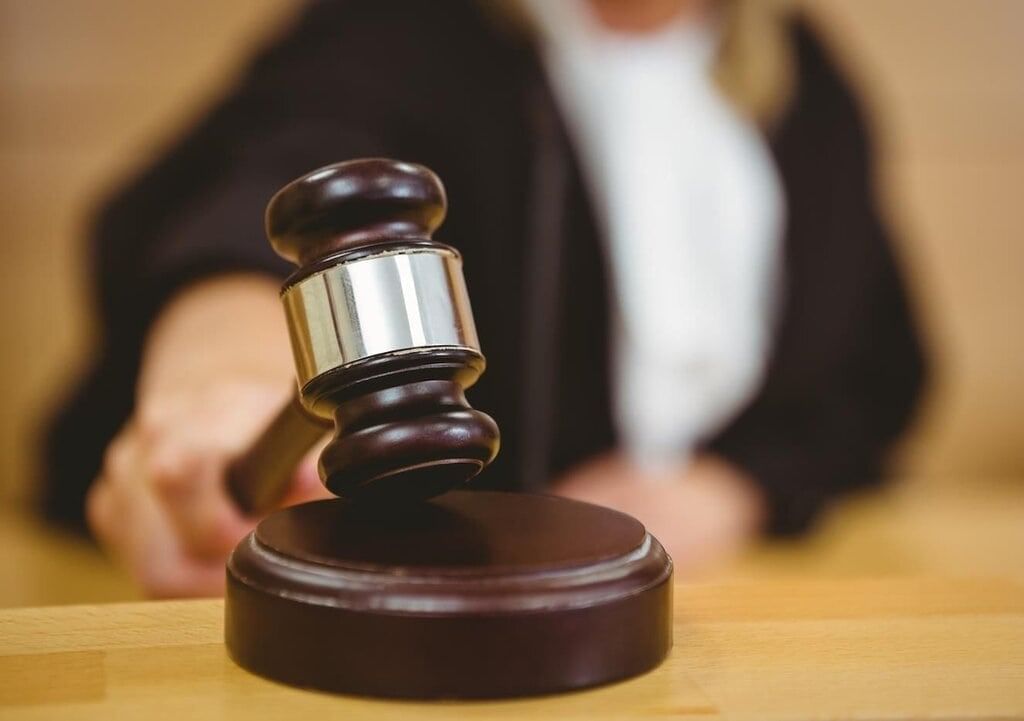
Why in News?
A judge from the Madhya Pradesh High Court has recused himself from hearing a petition related to an alleged illegal mining case, citing that a Member of the Legislative Assembly (MLA) had attempted to contact him for discussions regarding the matter.
Key Takeaways
- Recusal is a judge's withdrawal from a case due to a conflict of interest or perception of bias.
- There are no codified laws regarding recusal, but Supreme Court rulings provide guiding principles.
Additional Details
- Overview: Recusal refers to a judge abstaining from a case to avoid conflicts of interest or perceived bias.
- Legal Basis: While there are no explicit laws, principles from multiple Supreme Court rulings guide the recusal process. For example, in Ranjit Thakur v. Union of India (1987), the test of bias is determined by the reasonableness of apprehensions in the affected party's mind.
- Grounds for Recusal:Judges may recuse themselves for various reasons, including:
- Prior personal or professional associations with a party involved.
- Having previously represented a party in the case.
- Ex parte communications with involved parties.
- Reviewing their earlier judgments.
- Financial or personal interests, such as shareholding in a company related to the case.
- Underlying Principle: The principle of nemo judex in causa sua emphasizes that no one should be a judge in their own case.
- Process of Recusal: The decision for recusal typically lies with the judge's discretion. They may inform parties verbally, record it in the order, or choose to recuse without explanation. Requests for recusal can be made by lawyers or parties, but the final decision rests with the judge.
- Concerns Related to Recusal:
- Judicial Independence at Risk: The recusal process can be misused by litigants to engage in "bench hunting," compromising judicial impartiality.
- Lack of Uniform Standards: The absence of formal rules can lead to varied approaches by different judges.
- Potential for Abuse: Recusal requests may delay proceedings, intimidate judges, or obstruct justice, undermining the integrity of courts and timely justice delivery.
With reference to the Constitution of India, prohibitions or limitations in ordinary laws do not restrict the constitutional powers under Article 142. This implies that:
- (a) The decisions made by the Election Commission of India in discharging its duties cannot be challenged in any court of law.
- (b) The Supreme Court of India is not constrained by laws made by Parliament in the exercise of its powers.
- (c) In a severe financial crisis, the President of India can declare a Financial Emergency without consulting the Cabinet.
- (d) State Legislatures are restricted from making laws on specific matters without the Union Legislature's concurrence.
RTE and Minority Schools
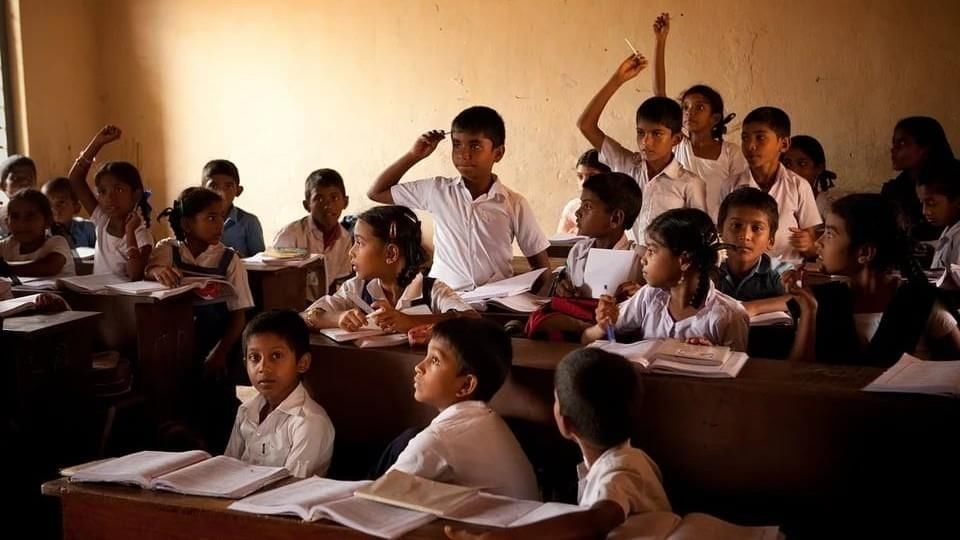
Why in News?
The Supreme Court has raised questions about its 2014 judgment in the case of Pramati Educational and Cultural Trust, which had exempted minority educational institutions from the provisions of the Right to Education (RTE) Act, 2009. A two-judge Bench is now reconsidering whether the Teacher Eligibility Test (TET) is mandatory for minority schools, highlighting concerns about the fundamental right to quality education for all children.
Key Takeaways
- The Supreme Court's ruling on TET pertains to minority schools and in-service teachers.
- Concerns were raised regarding the applicability of the RTE Act to minority institutions.
- The 2014 Pramati ruling may have compromised children's access to quality education.
Additional Details
- Supreme Court Ruling: The Bench referred the issue of RTE Act applicability to minority schools to a larger Bench, questioning the previous exemption granted by the Pramati ruling.
- In-Service Teachers: Teachers with less than 5 years of service may continue without passing the TET, while those with more than 5 years must clear it within two years to remain eligible for their positions.
- The ruling criticized the Pramati judgment for being "legally suspect" and for disproportionately exempting minority institutions from RTE mandates, particularly regarding the 25% reservation for disadvantaged children.
- Conflicts between Article 30(1) (rights of minority institutions) and Article 21A (children’s right to education) were highlighted, emphasizing that both rights must coexist.
- The Court upheld the 86th Amendment (2002) and the 93rd Amendment (2005), recognizing education as a fundamental right and allowing state provisions for disadvantaged groups, while maintaining that RTE Act's application to minority schools was unconstitutional.
- The rationale for exemption included concerns that reserving seats for disadvantaged children could dilute the minority character of educational institutions.
- Experts note that the RTE Act prioritizes children's rights over institutional autonomy, indicating the need for compliance regarding pupil-teacher ratios and qualified teachers in minority schools.
The Supreme Court's renewed examination seeks to ensure that minority schools uphold the same educational standards as others, thereby protecting the fundamental rights of all children to quality education.
Appointment of Vice Chancellors by Governor
Why in News?
A recent controversy in Kerala has emerged regarding the appointment process for Vice-Chancellors (VCs) of state universities. The Governor, who serves as the ex-officio Chancellor, has requested the Supreme Court to exclude the Chief Minister from this selection process.
Key Takeaways
- The Vice-Chancellor serves as the Principal Academic and Executive Officer of the university.
- Vice-Chancellors are appointed following UGC Regulations, 2018, based on recommendations from a Search-cum-Selection Committee.
- Legal supremacy in conflicts between UGC regulations and state laws favors UGC norms under Article 254 of the Constitution.
About the Role of Governor and President in Universities
- State Universities: The Chancellor operates independently of the State Cabinet in matters concerning university governance.
- VC Appointment: The Chancellor appoints Vice-Chancellors from a panel put forth by a Search-cum-Selection Committee as per UGC Regulations.
- Legal Supremacy: In cases of conflict between UGC regulations and state laws, UGC norms take precedence under Article 254 of the Constitution.
- Central Universities: The President of India acts as the Visitor under the Central Universities Act, 2009, serving as a ceremonial head.
- The President selects Vice-Chancellors from a panel suggested by a Search Committee and can request a new panel if dissatisfied.
- Oversight Powers: The President is authorized to conduct inspections and inquiries into universities.
UPSC 2014 Question:
Which of the following are the discretionary powers given to the Governor of a State?
- 1. Sending a report to the President of India for imposing the President’s rule
- 2. Appointing the Ministers
- 3. Reserving certain bills passed by the State Legislature for consideration of the President of India
- 4. Making the rules to conduct the business of the State Government
Select the correct answer using the code given below:
- (a) 1 and 2 only
- (b) 1 and 3 only
- (c) 2, 3 and 4 only
- (d) 1, 2, 3 and 4
This discussion underscores the significant role of the Governor in the appointment of Vice-Chancellors and highlights the ongoing debates about governance in higher education in India.
Foreigners Tribunal (FT) Can Issue Arrest Warrants
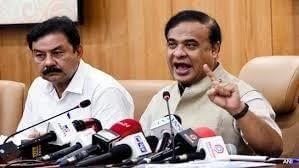 Why in News?
Why in News?
The Union Home Ministry has empowered Foreigners Tribunals (FTs), particularly in Assam, to detain suspected illegal immigrants in designated camps. This authority was previously exercised only through executive orders.
Key Takeaways
- Foreigners Tribunals are quasi-judicial bodies established under the Foreigners (Tribunal) Order, 1964.
- They determine whether an individual is a foreigner or illegal immigrant, particularly regarding border migration issues in Assam.
- About 100 FTs are currently operational in Assam, following the expansion after the NRC-2019.
- New provisions under the Immigration and Foreigners Act, 2025, grant FTs the authority to issue arrest warrants and detain individuals.
Additional Details
- Nature: FTs are established to adjudicate cases involving suspected foreigners, primarily focusing on references from border police and cases of "D" (doubtful) voters flagged by the Election Commission.
- Composition: Each tribunal consists of a maximum of three members, which may include retired judges, advocates, and civil servants with judicial experience.
- Functioning: FTs have the powers of a civil court, including the ability to summon witnesses and examine evidence, with a requirement to resolve cases within 60 days.
- Judicial Authority: Under the new provisions, FTs can now issue arrest warrants, order detentions, and require personal appearances.
- Restrictions on Employment: Foreigners are barred from working in strategic sectors without approval from the Central government.
- Exemptions: Citizens of Nepal, Bhutan, Tibetans, and Sri Lankan Tamils are exempted under a special order issued in 2025.
The new regulations signify a significant shift in the legal framework governing the detention and deportation of illegal immigrants in India, particularly in Assam, where migration issues have been a longstanding concern.
Debate on Exceeding the 50% Reservation Cap in India
Why in News?
The discussion surrounding the 50% reservation cap in India has gained renewed attention due to various petitions and political movements advocating for higher quotas and the sub-categorization of benefits.
Key Takeaways
- The demand for exceeding the 50% cap has resurfaced amidst political and social pressures.
- Recent statements have proposed increased reservations, such as an 85% cap in Bihar.
- Calls for a caste census aim to gather reliable demographic data to inform reservation policies.
Additional Details
- Constitutional Framework: Articles 15 and 16 guarantee equality before the law and equal opportunity in public employment while allowing special provisions for socially and educationally backward classes, including Scheduled Castes (SCs) and Scheduled Tribes (STs).
- Current reservation percentages at the central level include:
- OBCs: 27%
- SCs: 15%
- STs: 7.5%
- EWS: 10%
- Key Judicial Pronouncements:
- Balaji v. State of Mysore (1962): Capped reservations at 50% as 'reasonable limits.'
- State of Kerala v. N.M. Thomas (1975): Advocated for substantive equality, asserting that reservations extend equality.
- Indra Sawhney v. Union of India (1992): Upheld the 50% ceiling while recognizing OBC reservations.
- Janhit Abhiyan v. Union of India (2022): Clarified that the 50% limit applies to backward classes and not to economically weaker sections.
- State of Punjab v. Davinder Singh (2024): Emphasized the need for creamy layer principles for SCs and STs.
- Emerging Issues: The Rohini Commission reported that a disproportionate share of OBC benefits is claimed by a small percentage of castes, prompting calls for sub-categorization.
- Backlog of Vacancies: Significant portions of reserved seats remain unfilled, highlighting systemic recruitment issues.
The challenge lies in balancing the right to equality with the need for social justice. While increasing reservations beyond the 50% cap could undermine meritocracy, data shows that marginalized groups are still underrepresented. Proposed reforms include sub-categorization and enhanced investment in skill development to mitigate reliance on public-sector reservations.
Concealing a Judge’s Dissent, Eroding Judiciary’s Authority
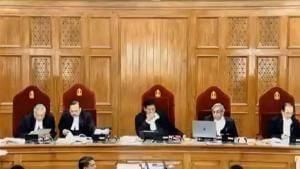 Why in News?
Why in News?
The recent controversy surrounding Justice B.V. Nagarathna's dissent regarding the elevation of Justice Vipul M. Pancholi has raised significant concerns about the transparency and accountability of India's judicial appointment process, specifically the Collegium system.
Key Takeaways
- The Collegium system lacks transparency, with appointments made behind closed doors.
- Justice Nagarathna's dissent highlights the opacity and democratic deficit within the judicial appointment process.
- Secrecy in judicial appointments undermines the legitimacy and authority of the judiciary.
Additional Details
- Collegium System: Established through the Second Judges Case (1993) and the Third Judges Case (1998), this system gives the power of judicial appointments to the five senior-most judges of the Supreme Court. However, its deliberations are not publicly disclosed, leading to a lack of accountability.
- Despite the judiciary's defense of secrecy by citing candidate protection and political pressure, other democracies have shown that transparency can coexist with fairness.
- The absence of justification for appointments and hidden dissents erodes public trust and the judiciary’s moral authority.
To protect its legitimacy, the judiciary must reform the Collegium system to embrace transparency. By doing so, it can strengthen public confidence and uphold the democratic principle that all power must be justified.
National Sports Governance Act 2025 - Towards Transparency and Accountability in Indian Sports
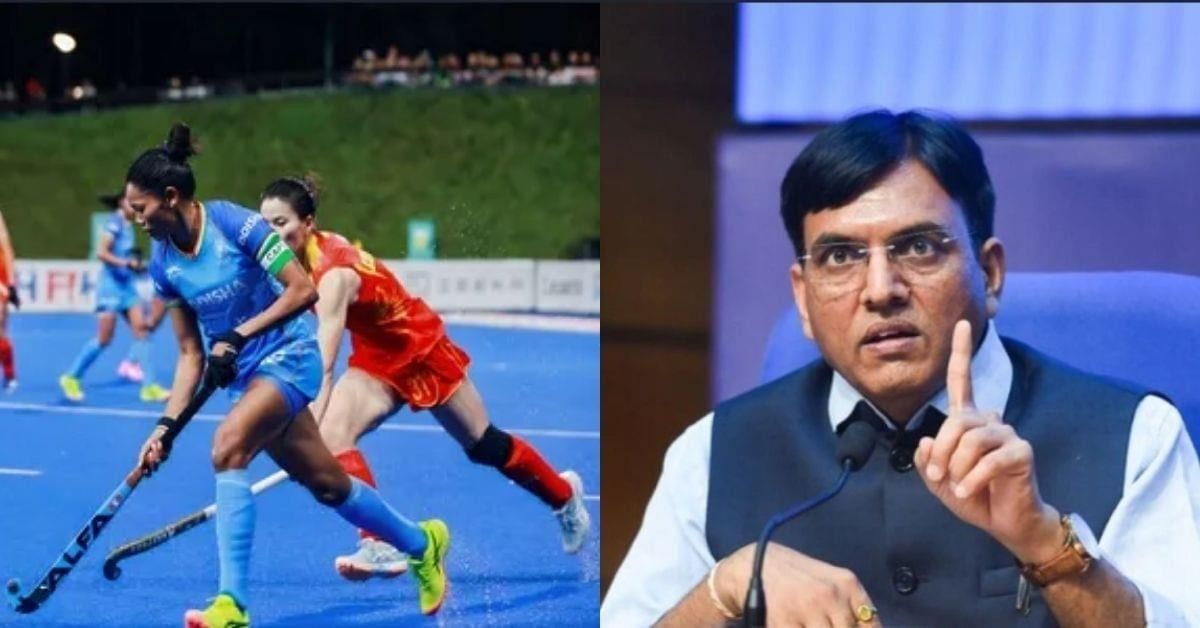
Why in News?
The National Sports Governance Act 2025 was enacted during the Monsoon Session of Parliament to regulate and recognize national sports bodies in India. Its primary focus is to eliminate long-standing issues of mismanagement, political interference, and legal disputes in sports administration, replacing the outdated National Sports Development Code of India with a more comprehensive legal framework.
Key Takeaways
- The Act aims to bring transparency and accountability to sports governance in India.
- It establishes a National Sports Board to recognize national sporting federations.
- Key provisions include governance norms, dispute resolution, and election oversight.
Additional Details
- Historical Context: India was the first Asian nation to participate in the Olympics back in 1900, yet it lacked a dedicated sports governance law until 2025. This void allowed sports federations to be controlled by political figures, leading to issues such as electoral malpractices and domination by non-sportspersons, as noted by the 2014 Parliamentary Standing Committee.
- Global Penalties: Indian sports bodies faced sanctions for misgovernance, including the Wrestling Federation of India being suspended in 2023 for failing to hold timely elections and the All India Football Federation being suspended by FIFA in 2022.
- Governance Framework: The Act empowers the establishment of a National Sports Board to grant recognition to federations, thereby resolving legitimacy disputes. It also mandates the creation of a code of conduct aligned with international best practices.
- Dispute Resolution: A National Sports Tribunal will be set up to handle disputes, streamlining sports-related litigation.
- Election Oversight: The Act establishes a national panel of electoral officers to monitor elections, ensuring compliance and reducing the risk of non-compliant federations being disqualified.
The National Sports Governance Act 2025 represents a significant shift in sports administration in India, promoting an inclusive and transparent governance structure. Its effective implementation is crucial for empowering sportspersons and restoring India's credibility on the global sports stage, thereby enhancing its prospects of hosting prestigious events like the Commonwealth Games and the Olympics.
UGC Draft UG Curriculums and States’ Objections
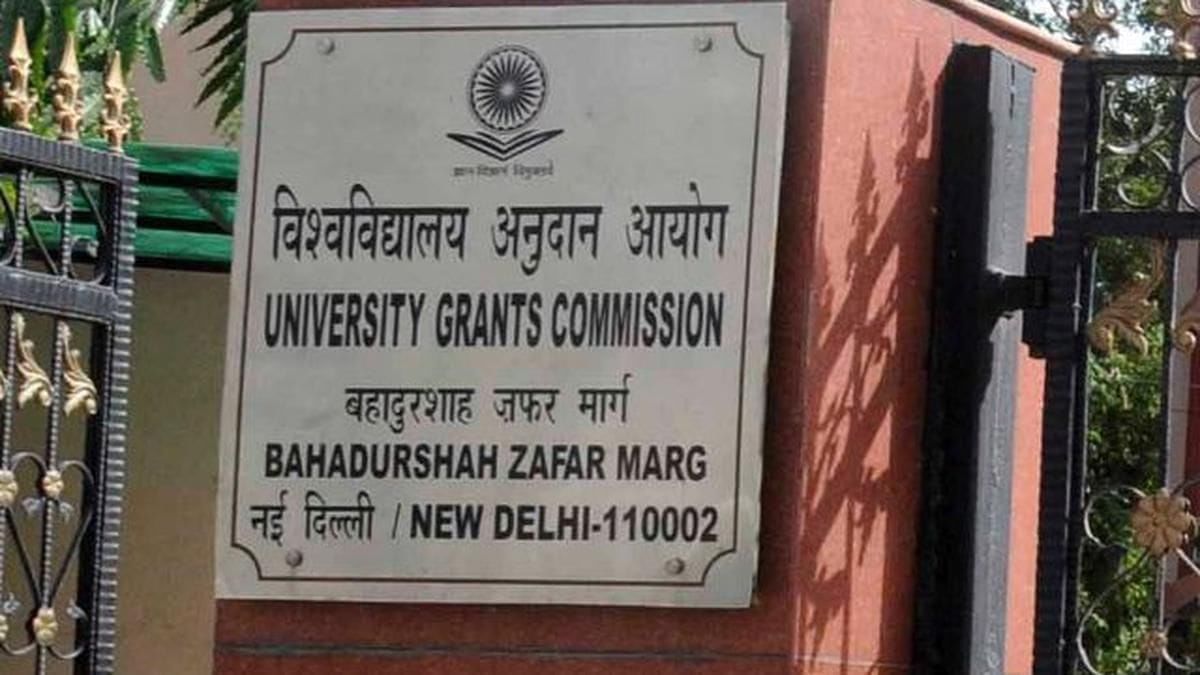
Why in News?
The University Grants Commission (UGC) has recently released draft undergraduate curriculums for public feedback. However, states governed by the Opposition, specifically Karnataka and Kerala, have raised significant objections. Both states are now forming expert panels to review the drafts before submitting their official responses. While the UGC has invited nationwide comments, these objections underscore federal concerns regarding curriculum design and its alignment with state educational priorities.
Key Takeaways
- The UGC has proposed a Learning Outcomes-based Curriculum Framework (LOCF) aimed at enhancing higher education.
- Opposition states have criticized the draft curriculums, suggesting they reflect a central imposition of ideology.
- Expert panels are being formed in Karnataka and Kerala to evaluate the drafts before formal feedback is provided.
Additional Details
- Learning Outcomes-based Curriculum Framework (LOCF): This educational model focuses on the outcomes of learning—what students should know, understand, and achieve—rather than merely delivering content.
- Key Components:
- Graduate Attributes: Essential qualities such as intellectual curiosity, problem-solving skills, ethical conduct, and adaptability expected post-study.
- Programme Outcomes: Clear learning outcomes for entire degree programs.
- Course Outcomes: Specific, measurable outcomes for individual courses indicating what students can do upon completion.
- Goals of LOCF:
- Shift in Focus: Emphasizes active construction and application of knowledge over passive memorization.
- Student Empowerment: Encourages active learning, positioning teachers as facilitators rather than mere instructors.
- Skill Development: Aims to build critical 21st-century skills like analytical reasoning and problem-solving.
- Enhanced Employability: Equips students with relevant knowledge and competencies for the workforce.
- Holistic Development: Promotes academic knowledge alongside values, ethics, and lifelong learning.
The UGC has released draft LOCFs for nine subjects, including anthropology, chemistry, commerce, and political science, among others. These drafts are aligned with the National Education Policy (NEP) 2020 and envision flexible four-year multidisciplinary undergraduate programs with multiple exit options. Notably, they aim to integrate Indian Knowledge Systems into higher education, blending traditional knowledge with modern education.
Despite the UGC's clarifications that universities retain the autonomy to adapt or redesign modules, the draft curriculum has faced backlash for potentially imposing central government ideologies. With expert reviews underway, the discussions continue to evolve around the UGC's proposed changes and their implications for state education systems.
New Foreigners Act
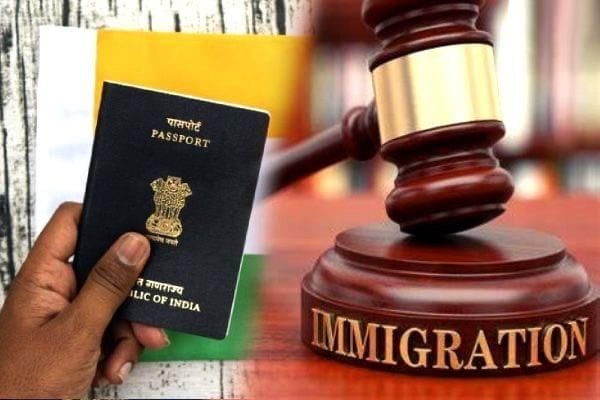
Why in News?
The Immigration and Foreigners Act, 2025, which came into effect on September 1, has introduced a comprehensive revamp of India’s framework for managing foreign nationals. This significant update aims to enhance clarity, efficiency, and uniformity in regulating foreign nationals through a consolidation of existing laws.
Key Takeaways
- The Act replaces four older laws, streamlining the immigration framework.
- It introduces clear, centralized rules for the regulation of foreign nationals.
- New provisions include mandatory digital reporting and a graduated fines system for violations.
Additional Details
- Consolidation of Laws:The Act replaces the following laws:
- Passport (Entry into India) Act, 1920
- Registration of Foreigners Act, 1939
- Foreigners Act, 1946
- Immigration (Carriers’ Liability) Act, 2000
- Why an Overhaul Was Needed: The previous immigration regime was fragmented and outdated, leading to inconsistent enforcement and administrative gaps.
- Valid Documents and Entry Points: All entrants must possess a valid passport or travel document and, where applicable, a visa. Entry and exit are restricted to designated immigration posts.
- Role of Immigration Officers: Officers have the authority to validate or deny entry based on national security concerns.
- Reporting Obligations: Accommodation providers must report details of foreign guests within 24 hours of their arrival and departure.
- Exempted Categories: Certain groups such as military personnel, citizens of Nepal and Bhutan, and specific refugees are exempt from standard entry and visa requirements.
- Digital Records: The Act mandates online notifications for accommodation and healthcare services, creating a comprehensive digital database for monitoring.
- Fines for Violations: Penalties for infractions range from ₹10,000 to ₹5 lakh, with reduced fines for specific vulnerable groups.
- Centralization of Powers: The central government retains primary authority over immigration but can delegate functions to states and Union Territories.
The Immigration and Foreigners Act, 2025, represents a significant shift in India's approach to immigration by introducing modernized systems and clear rules, essential for an effective regulatory framework.
|
44 videos|5343 docs|1128 tests
|
FAQs on Indian Polity and Governance: September 2025 UPSC Current Affairs - Current Affairs & Hindu Analysis: Daily, Weekly & Monthly
| 1. What is the significance of the Immigration and Foreigners (Exemption) Order in providing relief for refugees? |  |
| 2. How does Criminal Defamation impact democratic debate and freedom of speech? |  |
| 3. What are the key features of the National Security Act of 1980? |  |
| 4. What are the enhanced powers given to Foreigners Tribunals and their implications? |  |
| 5. What are the main objectives of the Promotion and Regulation of Online Gaming Act? |  |





















